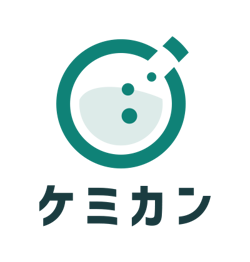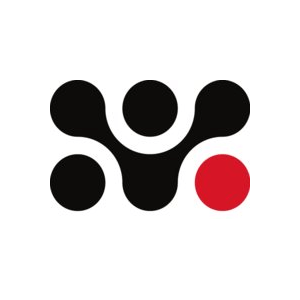Updated December 12, 2023
All About "Flex Time" in Japan
If you’re looking for a job or considering working in Japan, you may be curious about what the usual work hours are. You may also be wondering if it’s even possible to find a company with flex time in Japan.
I can’t blame you. Japan is notorious for its heavy work culture, after all. The stories you hear might make you second guess your decision, but I’m here to tell you that it’s not all bad.
Work conditions in Japan are not what they used to be, especially in the tech world. Big companies have different types of work hours depending on the company culture, and I’m here to tell you all about it.
In this post, I’ll go into the work hour types in Japan in detail, explain what “flex time” and other commonly used terms mean, and tell you how the work hours are at Japanese tech companies.
Let’s start by explaining what flex time is.
What is Flex Time?
In Japan, flex time has emerged as a progressive approach to work scheduling. It allows employees the autonomy to set their own work hours within predefined boundaries set by their employers.
This system grants individuals the freedom to customize their start and end times, fostering a more personalized work schedule.
Flex time, while highly desirable, is still not implemented by all companies. But no need to worry — there’s been an increase in this type of work system. So make sure you keep an eye out for “flex time” positions while job hunting.
Flex time has quite a few benefits, so it’s no surprise that it’s gaining popularity in Japan. For example, when all companies work on a fixed-time basis, commuting during rush hour can be unbearable.
In a city as crowded as Tokyo, flex time is a true necessity. By spreading out the times when people are commuting, it cuts down on the number of people in traffic. This can help lower the stress of commuting.
Another (arguably more significant) motivation behind flex time is the ability to tailor your working hours to your personal needs. It lets you have a consistent work routine that doesn’t conflict with your time for yourself and your family.
Employees have diverse obligations and responsibilities outside of work. Flex time acknowledges and accommodates these varying needs, encouraging an inclusive and supportive work environment.
Therefore, flex time just makes sense.
While there’s no doubt that we all understand the benefits of flex time, unfortunately, not all companies have fully adopted this progressive work style.
However, there’s something similar — let’s have a look.
Flex Time With Core Hours

Some companies don’t allow for complete autonomy when it comes to working hours, but they may still want to benefit from some of the conveniences that come with flex time. This is precisely what the core hours are for.
Companies want at least some hours, usually within the “usual” working hours of 9 to 5, for all employees to overlap. These hours are called “core hours.”
Let me explain it with an example.
Let’s say that your core working hours are between 11 AM and 3 PM, and your regular workday is 8 hours. This means that as long as you’re working between 11 AM and 3 PM, which is 4 hours of work, you can work the remaining 4 hours in the early morning or in the evening.
It all depends on your choice. This way, the employer is able to count on most of the employees being available for at least a few hours a day during the busiest hours.
Sometimes, you may see this type of work hours being referred to as a “flex time” system. This is because regular flex time, which doesn’t have any predetermined working hours, is referred to as “super flex time” or “full flex time”.
There’s also a third type of working hour system in Japan, and most companies still use this traditional system. You’re probably familiar with it, as it’s probably the most popular system in the world.
Fixed Work Hours (Kotei Jikan Seido)
The third type of working hours that exists in Japan is the fixed hour system, and it’s known in Japan as “Kotei Jikan Seido.”
This one is pretty popular across the globe, as it’s the traditional system of working between set hours. Usually, in Japan, these set hours are between 8 AM and 5 PM. Depending on your company, you may also be obliged to work from 9 AM to 6 PM, but you get the idea.
Fixed work hours are pretty rigid. While not all of them do, some companies may even require your one-hour lunch break to be between certain hours.
While Kotei Jikan Seido is the most popular work hour system in Japan, things are slowly but surely changing. Especially for tech companies and internet startups, adopting a flex time strategy is becoming pretty common.
Aside from these types of work hours, there’s also the part-time work type.
Part-Time Work in Japan

While the systems I mentioned above are all full-time, there’s also a part-time work system in Japan. It’s usually for students, but professionals who are in between jobs might also consider it as a temporary measure.
If you’re in between jobs, you’ll also have the unemployment insurance system to fall back on, of course. If you’re just finding out about this and want to learn more, you can head over to my recent post, where I explained the unemployment system in Japan in detail.
Let’s say that you initially came to Japan on a student visa, maybe for a master’s degree or college.
Legally, people who are on a student visa in Japan can only work for 28 hours weekly. These 28 hours will most likely be during the peak hours/days of the business, depending on the job.
If you’re working during a school holiday, like a semester break, your work days can even be as long as 8 hours.
According to a survey conducted by the Japan Student Services Organization, 70% of the students in Japan work part-time jobs, and about 45% make at least 1000-1200 JPY hourly.
The only limitation to part-time work is the 28 hours I mentioned, but you’ll also need to obtain a work permit from the immigration office in order to start working if you’re a foreigner on a student visa.
Work Hours at Tech Companies in Japan
Before I finish today’s post, I also would like to talk about the tech and internet companies in Japan and what the work hour-systems are like in these companies.
As I mentioned above, flex time is making its way into the mainstream in Japan, and tech companies are the first to adopt it. If you’re looking for tech jobs, I recommend you look for companies that offer flex time or “super/full flex time.”
Chances are, you’ll at least find something that will give you some type of autonomy when it comes to your working hours. While the number of companies without core hours are on the rise, they’re still not as common as companies that do have them.
Luckily, most companies are upfront about their management practices nowadays. Finding information on a company is as easy as a simple Google search. If the company is being secretive about its practices, this should also give you an idea, as that’s usually a red flag.
Even then, you can always find people online who’s had first-hand experience with the company. It’s all a matter of finding the right community — Reddit is a great resource in this regard.
Lastly, there are a lot of companies in the Japan Dev company list that offer flexible work hours, in addition to other convenient practices like remote work. I recommend you check it out and see if there’s anything that’ll work for you.
Overtime in Japan

As today’s post is focused on the work hour systems in Japan, I also would like to give a little insight into how the overtime system works over here.
Legally, considering that you’re working a regular full-time job, any work that you do once you finish your 8-hour day or 40-hour week is overtime work. During overtime, your hourly wage is increased by a certain amount, which is determined by when you do the overtime.
Regular hourly overtime pay, according to law, is 25% more than your hourly wage. If you work late night hours, which are between 10 PM and 12 AM, your hourly wage will be increased by another 25% as well. For national holidays, there’s a bigger difference as the increase is by 35%.
These rates add up too.
If you work on a national holiday, and it’s late night hours, you’ll earn 60% more than your hourly wage. If you stay late on a regular day and work until 11 PM, your extra hours until 10 PM will be calculated using the 25% rate, while your work after 10 PM will make you 50% more than your hourly salary.
Alternatively, some companies use a fixed overtime system to avoid paying such high rates. In this system, your overtime is predetermined in your contract. Even if you don’t have work to do during your fixed overtime, you still get paid.
However, you also don’t get paid the 25% increase for the overtime you do. It’s a system that’s open to exploitation, and it’s best to be careful.
There are also a couple more unofficial overtime systems that you should be wary of. I wrote about these in detail in a recent post. You can head over to my overtime in Japan post to learn more about it.
Conclusion
In this post, I tried to explain the flex time work-hour system in Japan to the best of my abilities. As I mentioned, flex time doesn’t always refer to the same thing, as terms like “super-flex time” and “flex time with core hours” are often used as well.
The idea is that flex time gives the employees complete autonomy over their working hours because the focus is not on the hours but on the tasks. As long as the output of work is timely, employees can schedule their days freely.
While flex time isn’t that popular in Japan yet, there are a lot of tech companies and young startups in Japan that have adopted the system. If you’re looking for tech jobs, it’s best to look for companies with flex time first.
If you’re having trouble finding a job, I wrote a guide you can check out on how to find a job as a software developer in Japan. It may be helpful and give you an insight into what the job hunt is like in Japan.
Get Job Alerts
Sign up for our newsletter to get hand-picked tech jobs in Japan – straight to your inbox.








